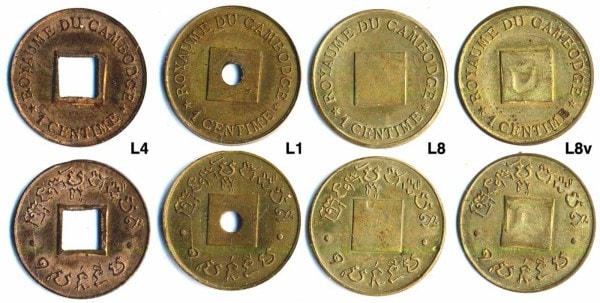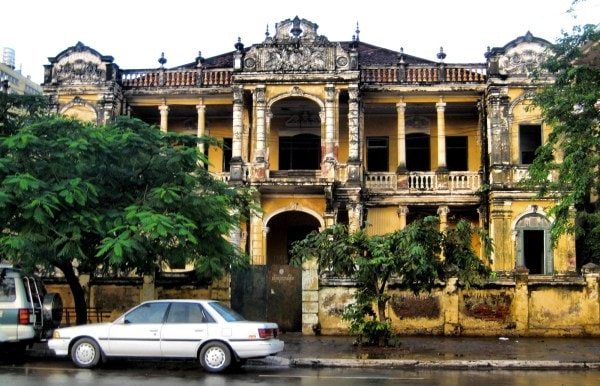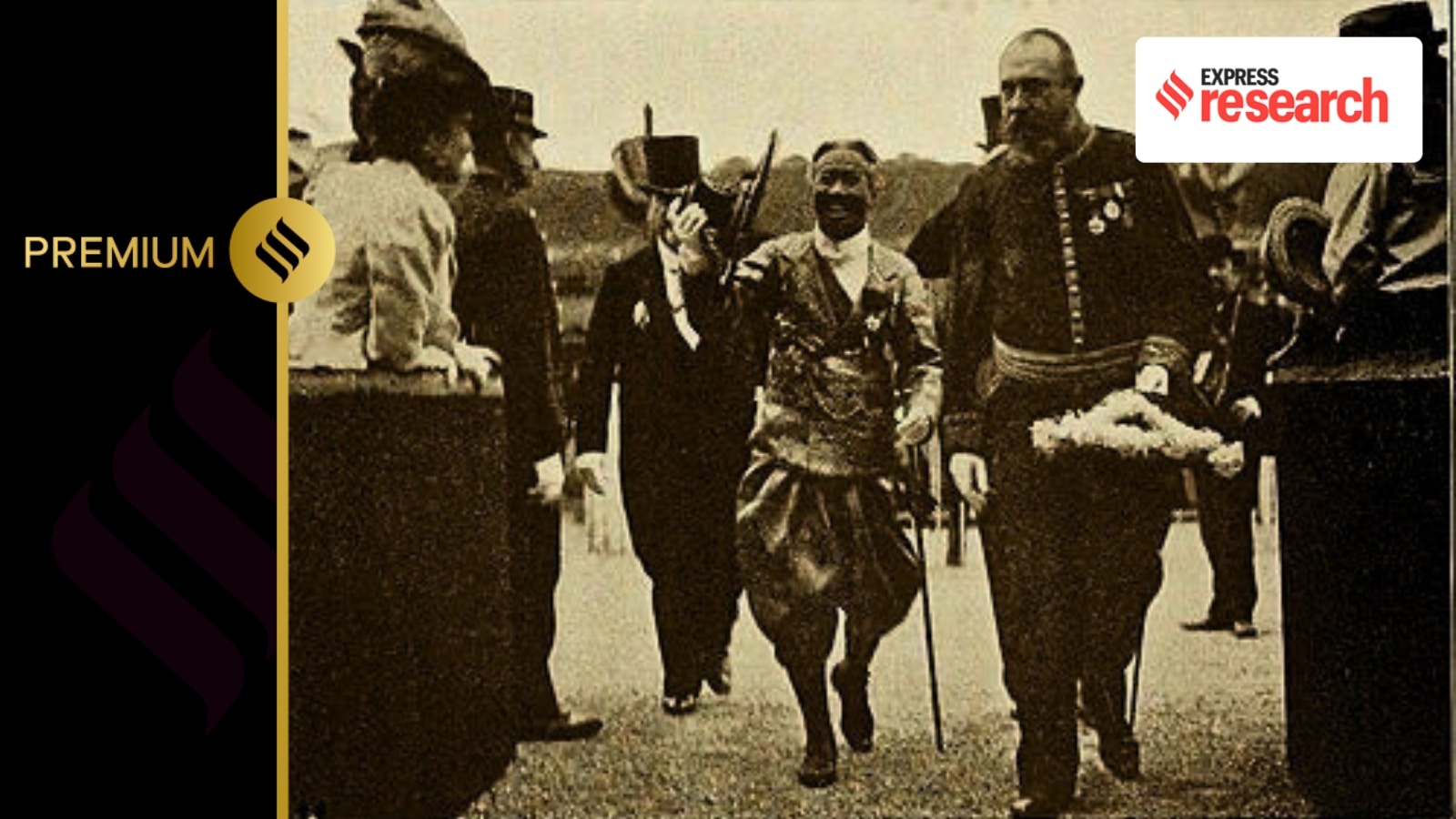One of the conflicts drawing global attention in 2025 is the dispute between the Southeast Asian neighbours — Thailand and Cambodia. At its core lies a border. Stretching across 508 miles, this boundary was drawn when France occupied Cambodia in the late eighteenth century.
As the two nations reach a ceasefire, it is worth revisiting Cambodia’s colonial past. What sparked French interest in the region? How did colonial policies reshape Cambodian society? And how did the French colonial model compare to British rule in India?
Cambodia and early visitors
Cambodia is situated in mainland Southeast Asia, with Thailand to the west and Vietnam to the east. It shares its northeastern border with Laos. The ethnic majority of Cambodia, the Khmers, reached their political peak in the twelfth and thirteenth centuries, when the Khmer kingdom of Angkor encompassed portions of what are now Thailand, Laos, Vietnam, and Myanmar. Since the thirteenth century, however, this stronghold steadily weakened.
Story continues below this ad
Eventually, this led to centuries of civil war over kingly succession that disrupted regional peace and governance. What followed were European attempts to capitalise on this instability. A century after the fall of Angkor, the Spanish and Portuguese led several misadventures on Cambodian soil. In the eighteenth and nineteenth centuries, the factions fighting for Khmer kingship sought the help of their neighbours — Vietnam and Siam (modern-day Thailand) — to support their claims.
The Khmer kings at the turn of the nineteenth century, King Ang Eng and his successor Ang Chan, were both aided by the Siamese army and later crowned in Bangkok. In a turn of events, however, Chan sought help from Vietnam against his brother, who was vying for the throne. This led to a battle between Siam and Vietnam, fought in Cambodia. Vietnam won, with Emperor Ming Mang introducing a range of reformist policies designed to make Cambodia a Vietnamese political unit.
The 1820s and 1830s were decades of Vietnamese hegemony – the capital city of Phnom Penh was isolated from the world, and visitors required Vietnamese permission to arrive via the Mekong. According to academic Sokhieng Au in Mixed Medicines: Health and Culture in French Colonial Cambodia (2011), the Khmer peasantry began to resent the Vietnamese. “By 1840, Ming Mang was facing a countrywide revolt.”
Story continues below this ad
Au adds that incidentally, just before the outbreak of hostilities in Vietnam, “Norodom [Cambodian ruler] had approached the French government with interest in establishing some sort of tributary alliance.” She notes that he viewed France as Siam or Vietnam, a strong power to play against the others. “In this,” Au writes, “he would be gravely mistaken.”
Speaking with indianexpress.com, she summarised: “For a couple of hundred years, Cambodia was a vassal state between Thailand and Vietnam, often playing one against the other. And one of the things Cambodian kings started doing was trying to get the same kind of vassalage or protection from some of the European powers that were mucking around in Southeast Asia. For instance, they approached Napoleon.”
The entry of the French
The French naturalist, Henri Mouhot, entered Cambodia through Kampot in June 1859. Mouhot found Cambodia’s condition to be deplorable. The population, he noted, had been seriously reduced due to ongoing wars. Among the products he listed (tobacco, pepper, sugar, coffee, silk, and cotton), Mouhot was most interested in the cotton crop, argues academic Margaret Slocomb in An Economic History of Cambodia in the Twentieth Century (2010). This, according to Slocomb, “might have supplemented French needs should the American Civil War interrupt trans-Atlantic trade.” Cambodian forests and the mountains containing gold, lead, copper, and iron also caught his attention.
In 1860, during Mouhot’s travels in the region, the Khmer king died. In the fight for succession, Siam took advantage and Cambodia succumbed once more. “The head of the Catholic mission in Cambodia, Bishop Miche, urged French intervention to restore order,” says Slocomb. The French, however, were more interested in securing access to the Mekong, which would allow entry into southwest China.
Story continues below this ad
 A coin issued by the French colonial government in Cambodia (Wikimedia Commons)
A coin issued by the French colonial government in Cambodia (Wikimedia Commons)
The French expedition for the Mekong set out from Saigon in June 1866 to find a route to the Chinese province of Yunnan. However, this would prove disappointing. Slocomb notes that “The French ambition of “establishing a dominion in the eastern peninsula of Asia that would go far to rival in wealth and power the empire which the British have founded in Hindustan” was dashed by the findings of the commission. Unlike the Ganges which had led the British “to wide, rich, and populous countries in the interior,” the Mekong conducted the “weary travellers within the jaws of unsoundable gorges, overhung by Alpine precipices … or loses itself in a labyrinth of islets, of weeds…”
They thus turned to Cambodia, more by compulsion than choice. A member of the expedition, Louis de Carné, wrote: “Cambodia is a country of magnificent natural resources, and has a noble river — the Mekong — flowing through its midst. It produces dye-woods, ebony, rice, cotton… “all useless for want of enterprise and capital.” The French are anxious to supply these wants; and considering the position they hold, no doubt they will succeed in having their own way.”
Thus, the French representative at the court of Oudong in Cambodia concluded a protectorate treaty in August 1863.
Under the French protectorate
From the signing of the 1863 treaty, French administrators began encroaching upon Norodom’s powers. In 1884, according to Au, the French regional governor Charles Thomson “forced the king to sign a treaty greatly expanding the power of the French protectorate over the country.” She asserts that the treaty practically turned Cambodia “into a full-fledged colony.” The first article of the treaty, for instance, stated that the King would accept all administrative, judicial, and financial reforms that the Government of the Republic might deem useful for facilitating the accomplishment of its Protectorate.
Story continues below this ad
Article 3 noted that Cambodian officials would continue, under control of the French authorities, to administer the provinces except in the matter of taxes, customs, indirect taxes, public works. While Article 6 declared: Cambodia would carry the cost of the administration of the kingdom and the protectorate.
Contrary to what the French anticipated, a countrywide revolt erupted after this treaty. The protectorate was forced to seek the assistance of Norodom to stop the revolts. Using both threats and incentives, the French representative persuaded the king to bring peace. The king did the needful, and French administrators temporarily vested him with powers.
For the next two decades, the French remained helpless. With the death of Norodom in 1904, however, they became hopeful. Au noted in her interview that the ascension of his half-brother Sisowath, chosen by the French, increased colonial involvement in Khmer society. It was during the Sisowath years (1904-27) and those of his son Monivong (1927-41) that the French economic and political reach into the Cambodian countryside grew rapidly.
 Funeral procession of King Norodom in 1906 (Wikimedia Commons)
Funeral procession of King Norodom in 1906 (Wikimedia Commons)
By 1884, France had claimed the lower Mekong Delta. By 1893, it had obtained control of Laos, central Vietnam, and northern Vietnam, and proclaimed the five “states” of Annam, Cambodia, Cochinchina, Laos, and Tonkin as French Indochina. The résident supérieur du Cambodge (RSC) governed from the new capital city of Phnom Penh.
Story continues below this ad
Cambodia was further divided into several districts, each administered by a French representative, the district résident. “Perhaps the most significant administrative reform of the Protectorate was the creation of the commune, khum…to form the administrative link between the moral law of the village with its selected chief… and the bureaucratic commands of the chauvay srok, the district chief,” says Slocomb.
France was also to represent the country in its international affairs and advise on domestic policies, but domestic governance was to remain a native matter. “In reality, the colonial government quickly encroached on all fronts in Cambodia: domestic, international, economic, and administrative,” concludes Au.
Independence for Cambodia
The disputed border between Thailand and Cambodia was formally demarcated by the French in 1904. Charnvit Kasetsiri, Pou Sothirak, and Pavin Chachavalpongpun, in their jointly edited book, Preah Vihear: A Guide to the Thai-Cambodian Conflict and Its Solutions (2013), write: “The force of colonial politics pressured Siam [Thailand] to conclude a treaty with France in 1907.” Consequently, Siam ceded the Cambodian territories of Battambang, Sisophon, and Siem Reap to the French.
“Generally speaking,” reckons Slocomb, “the struggle for independence was not a widespread or mass movement.” King Norodom Sihanouk claimed that it was a series of diplomatic measures that won political and military independence for Cambodia in November 1953. According to the Constitution, “Cambodia is a Kingdom with a King who shall rule according to the Constitution and to the principles of liberal democracy and pluralism. The Kingdom of Cambodia shall be independent, sovereign, peaceful, permanently neutral and non-aligned.”
Story continues below this ad
 French architecture in Cambodia (Wikimedia Commons)
French architecture in Cambodia (Wikimedia Commons)
Scholars opine that French rule in Indochina suffered from inconsistencies. While the French Protectorate had a major impact on the founding institutions of modern Cambodia, “this impact stopped short of the mass of the people, the villagers who had little contact with the French and who went out of their way to avoid them,” notes Slocomb. They regarded the French as oppressive tax-gatherers and threats to their culture.
While dykes were dug, maps drawn, railroads built, and ports opened, the Protectorate failed in building a connection with the masses in healthcare services, agriculture, and industry. In agriculture, the vast majority was still engaged in subsistence rice cultivation; Industry also lagged far behind agriculture. Outside urban areas, the French colonial government did not effectively improve nutrition, ensure clean water, or educate the masses. Slocomb writes, “French officials like Paul Collard were captivated by the charm of rural Cambodian life and seemed reluctant to affect it in any fundamental way”. Development, according to her, “was reserved for the benefit of French investors and almost deliberately confined to isolated, gated spaces like the rubber plantations of the eastern plateaux.”
However, speaking of French remnants in Cambodia, Au noted: “Infrastructure and bureaucratic/judicial institutions resemble the French mode. Even surnames. In Cambodian society, it wasn’t that widespread to have a family name.”
“One of the really interesting things is that the older generation, like my parents’ generation, all speak French. And now, everyone younger than me, doesn’t speak French. And that is really an artifact of colonialism and French colonial influence in the country.”
Story continues below this ad
References
-
Mixed Medicines: Health and Culture in French Colonial Cambodia (2011) by Sokhieng Au
-
An Economic History of Cambodia in the Twentieth Century (2010) by Margaret Slocomb

